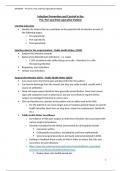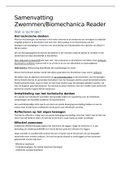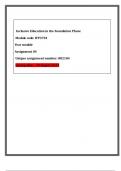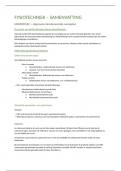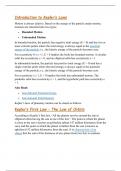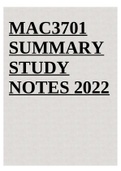Presentation
BCH3704 (Practical Portfolio)
- Institution
- University Of South Africa (Unisa)
A well written and structured Biochemistry Practical Portfolio(3704) for 3rd year students constituting of 7 major laboratory experiments namely: Enzyme Kinetics, Bacterial Transformation, Preparation of Plasmid DNA, Lysozyme Assays , Chromatography, Electrophoresis and Applications- Diagnostic an...
[Show more]




